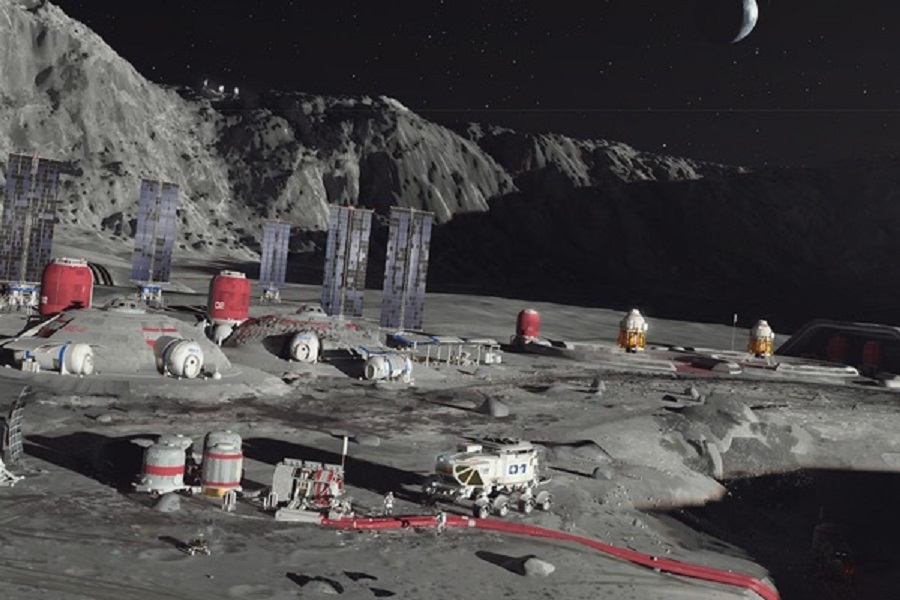Imagine a future where we no longer worry about resource shortages on Earth because we can mine valuable metals and minerals directly from asteroids and planets. This is not science fiction—it’s the emerging reality of space mining. With rapid progress in space science and technology, companies and governments are preparing to tap into extraterrestrial resources worth trillions of dollars.
In this blog, we’ll explore how space mining works, the technology behind it, its economic potential, challenges, and future prospects for humanity.
Why Space Mining Matters
Earth’s natural resources are finite. Precious metals like platinum, gold, and rare earth elements are becoming scarce due to industrial demand. Space mining offers solutions:
- Abundant Resources: Asteroids contain huge reserves of rare metals.
- Economic Growth: Could launch a trillion-dollar space industry.
- Sustainability: Reduces environmental damage caused by mining on Earth.
- Future Colonization: Provides essential resources like water and oxygen for life in space.
Science Behind Space Mining
What Are Asteroids Made Of?
Asteroids are rich in:
- Platinum Group Metals (PGMs) like platinum, palladium, and rhodium.
- Nickel and iron for construction.
- Water ice, which can be converted into oxygen for breathing and hydrogen for rocket fuel.
Example: A single asteroid (16 Psyche) is estimated to be worth $10 quadrillion in metals.
Identifying Mining Targets
Using AI and satellite technology, scientists identify Near-Earth Objects (NEOs) that are:
- Resource-rich.
- Easy to reach.
- Safe to mine.
NASA’s OSIRIS-REx mission already collected samples from asteroid Bennu, proving asteroid resource extraction is possible.
Technology Powering Space Mining
Robotics and Autonomous Systems
- Robotic miners will drill, extract, and process materials.
- Autonomous spacecraft will transport resources.
- AI-driven robots reduce human risk in hostile environments.
3D Printing in Space
Mining equipment and spare parts can be 3D-printed on-site using local materials, reducing dependence on Earth.
Spacecraft and Propulsion Systems
Reusable rockets by SpaceX and Blue Origin make mining missions cost-effective.
- Ion propulsion systems allow efficient travel to asteroids.
- Refueling with asteroid-derived hydrogen could extend missions.
Economic Impact of Space Mining
Trillion-Dollar Industry
Space mining could revolutionize the global economy.
- Rare earth elements are crucial for electronics, batteries, and green energy.
- Companies like Planetary Resources and Deep Space Industries are developing asteroid mining technology.
Lowering Costs of Space Exploration
Water and fuel mined from asteroids could power spacecraft, making deep space missions much cheaper.
Job Creation
The rise of space engineers, robotics experts, AI specialists, and astro-miners will create entirely new industries.
Challenges of Space Mining
Legal and Ethical Issues
- Who owns space resources?
- The Outer Space Treaty (1967) prohibits nations from claiming celestial bodies.
- Private companies face uncertain regulations.
High Costs
- Mining missions cost billions.
- Requires advanced technology that is still under development.
Technical Difficulties
- Microgravity makes mining extremely complex.
- Transporting heavy metals back to Earth is challenging.
The Future of Space Mining
Near-Term Goals (Next 10–20 Years)
- Testing small-scale mining missions.
- Extracting water and fuel from asteroids.
- Building partnerships between space agencies and private companies.
Long-Term Goals (Next 50+ Years)
- Large-scale asteroid mining.
- Supplying space colonies with essential resources.
- Creating a space-based economy supporting millions of jobs.
Space mining is no longer a dream; it is becoming one of the most transformative industries of the future. With advancements in robotics, AI, reusable rockets, and 3D printing, humanity is on the path to unlocking trillions of dollars’ worth of resources.
Though challenges remain in law, technology, and cost, space mining holds the promise of not just solving Earth’s resource crisis but also fueling our journey to become a multi-planetary civilization.
FAQs
Q1. What is space mining?
Space mining is the process of extracting valuable minerals, metals, and resources from celestial bodies like asteroids, moons, and planets.
Q2. Why is space mining important?
It provides unlimited resources, supports space exploration, and reduces environmental damage on Earth.
Q3. Which companies are working on space mining?
Companies like Planetary Resources, Deep Space Industries, and SpaceX are actively involved in developing space mining technology.
Q4. What challenges does space mining face?
High costs, legal barriers, and technical difficulties in microgravity are the biggest challenges.
Q5. How soon will space mining become a reality?
Experts predict small-scale missions within the next 10–20 years, with large-scale mining possible by the end of the century.

